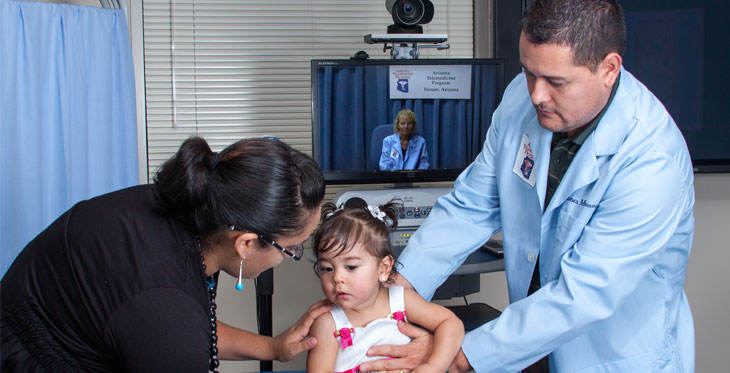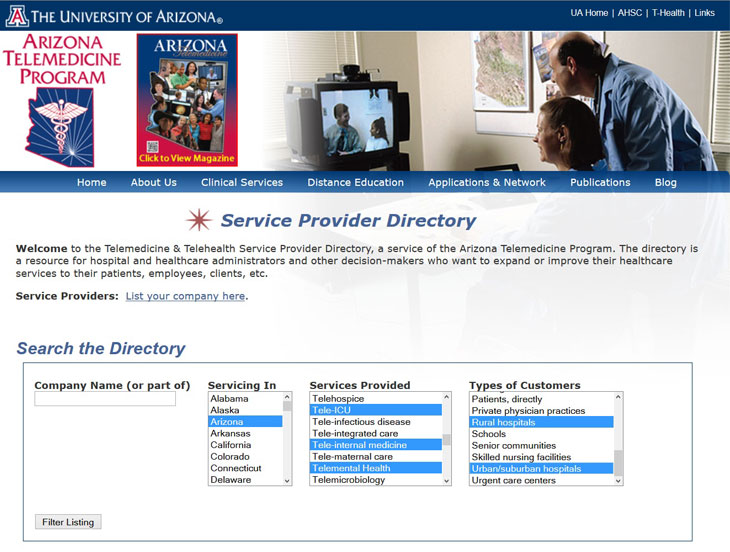Telemedicine Services: Now the Leading Edge

“What was the single most important development in telemedicine, telehealth and/or teleradiology in 2014?”
That question was just posed by a colleague in an email to several telemedicine industry leaders.
To me, the most important development was the burgeoning of the service provider market. Healthcare systems, hospitals, private practices, nursing homes and other entities are looking more and more to outside companies to provide medical services for their patients via telemedicine technology.
Telemedicine Services and Providers
Telemedicine can provide needed services—such as stroke, cardiology, and burn specialists—to small communities, broaden the reach of healthcare systems by broadening their offerings, provide local backup coverage and after-hours access, and improve convenience for patients who no longer have to travel outside their communities for specialty care. It improves patient outcomes and provider bottom lines. And it’s not only healthcare providers that are benefiting: Schools, employers, insurers, correctional facilities, and patients themselves are seeking services through telemedicine.
I count nearly 120 commercial providers of medical subspecialty and ancillary services via telemedicine technology who market their services to healthcare providers and other entities, and the field keeps growing. Nationwide, well-established, commercial firms are being joined by startups, academic programs and large, integrated healthcare systems that are marketing their services outside their own networks.
Partnering with a Provider
Why partner? It can be a lot easier to partner with a company that will provide medical services via telemedicine technology than to start your own program. With a partner, you don’t have to worry about physician recruitment and retention and you often don’t have to worry about installing and maintaining equipment, either.
Provider companies often will have the experience and expertise to walk you through forming the partnership and setting up the service—you don’t have to reinvent the wheel to offer more comprehensive health services to your patients.
A Service Provider Directory
So how to sort through the 120 or so providers to find your perfect partner? The Arizona Telemedicine Program created a National Telemedicine and Telehealth Service Provider Directory to help healthcare systems, hospitals and other entities navigate the market.

The directory is focused specifically on service providers, so users don’t have to wade through listings of platform and equipment vendors, telecommunications companies and consultants to find services. Service providers are asked to provide detailed information (incorporation date, number and type of practitioners, number of consults performed, recruitment practices, business models, etc.) to reduce the amount of preliminary research users have to do.
The directory, which was rolled out to service providers in October, now has more than 35 entries and is still growing.
By the way, if you are a service provider company, you can list your company in the directory free of charge by entering your information into the Service Provider Survey.
The Service Provider Showcase
Another way for healthcare systems and other entities to find their perfect partners: In October 2014, the ATP held the first annual Telemedicine and Telehealth Service Provider Showcase (SPS) aimed at helping healthcare systems and other entities find and partner with service providers.
Participant feedback was overwhelmingly positive. Look for the second annual SPS in fall 2015 in the Phoenix area.
A New Tool for Patients
Meanwhile, patients themselves now have a new tool. The American Telemedicine Association (ATA) just launched an accreditation program for direct-to-consumer service providers.
Knowing a provider is ATA-accredited will be reassuring to patients, like me, who realize that seeing a doctor via your tablet, from wherever you are, is a lot more convenient than waiting for an urgent care center to open and then driving and waiting in a room with cold and flu viruses flying.
In a December 2014 webinar, the ATA’s Jonathan Linkous said online consultation services hit about 450,000 consumers this year. But what he said next really hit home: “More and more, the technology is not quite the leading edge of what telemedicine is—it’s the services provided.”
